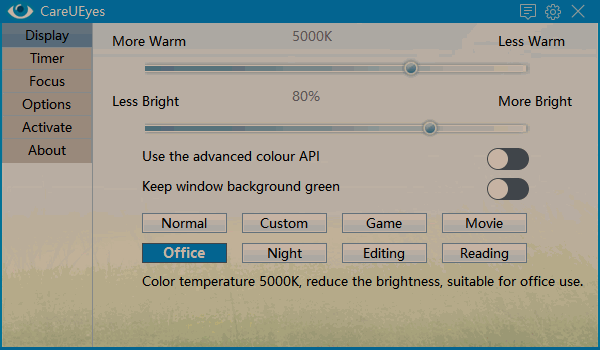About Blue light
Blue light is a range of the visible light spectrum, defined as having a wavelength between 450−495 nm. This short wavelength means that blue light is a type of high-energy visible light, defined as having a wavelength between 380 and 500 nm. Violet, indigo, and some blue-green light are other types of high-energy visible light.
Blue light sources are becoming increasingly common in today’s environment. Exposure to blue light comes from a variety of technologies including computers, smartphones, televisions, and lights.
Effects of blue light on eye health
people are exposed to blue light via everyday technology, Blue light exposure has been shown to impact health. Some studies also suggest that chronic blue light exposure may represent a risk for the development of age-related macular degeneration and other pathologies. Animal studies have shown that age-related macular degeneration can be induced by blue-light exposure. One epidemiological study has also shown a positive correlation between sunlight exposure – a natural source of blue light- and increased risk of early age-related macular changes in humans. However, this particular association of effects from blue light is difficult to assess in humans and warrants further study. Unfortunately, there are no studies that measure the effect of chronic blue LED exposure on age-related macular degeneration in humans as this is relatively new technology
Effects of blue light on sleep and circadian rhythm
Natural exposure to blue light during the daylight hours boosts people’s energy, alertness, and mood. However, elongated exposure to the waves transmitted through screen devices during the evening can disrupt circadian rhythm and cause various health effects including a disruption in normal sleep schedules. Scientists believe this is caused by blue-light-sensitive intrinsically photosensitive retinal ganglion cells suppressing the production of melatonin and/or stimulating the suprachiasmatic nucleus of the hypothalamus
How to avoid the effects of blue light
More than half of U.S. adults – 60 percent – spend a minimum of six hours a day, every day on phones, tablets, and computers, so it’s important to practice good habits to keep your eyes safe from blue light
- Take regular breaks
- The American Optometric Association recommends that for every two hours of looking at the computer screen, you should take a 15-minute break. During this time you should blink, close your eyes, and allow them to rest and re-lubricated
- Use blue light reduction glasses
- Get fitted for blue light filtering lenses to block the penetration of blue light from computers and digital devices. They’re available for prescription and non-prescription glasses.
- Stop using all devices one hour prior to sleep
- Don’t take phones and tablets to bed. The blue light from your phone’s display is more likely to keep you awake than the incandescent lamp on your bedside table
blue light filter
CareUEyes is an eye care software with blue light filter ,screen dimmer and bread minder(rest timer). This software provides eye protection for those who use their computer continuously for hours. Using this eye care software, you will be able to apply blue light filter to the computer screen in order to reduce eye strain. You can manually adjust the display color temperature and brightness to apply the blue light filter and relax your eyes. Apart from that, it also comes with 8 different predefined filters based on various activities and you can apply them to your screen with just a click.
CareUEyes can automatically filter the blue light and make the screen look warmer and comfortable to the eyes so that your eyes do not feel tired. You can choose many presets and customize them for the blue light setting such as normal, smart, office, game and night etc

You can download CareUEyes from https://care-eyes.com